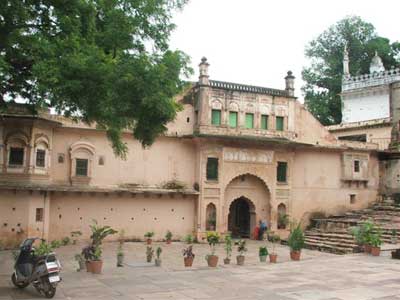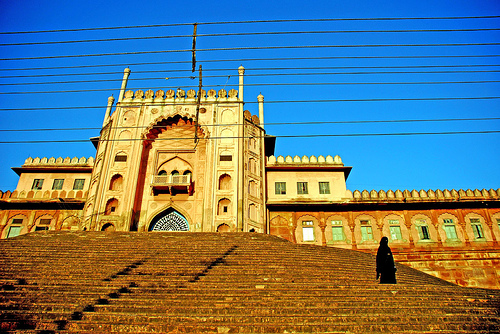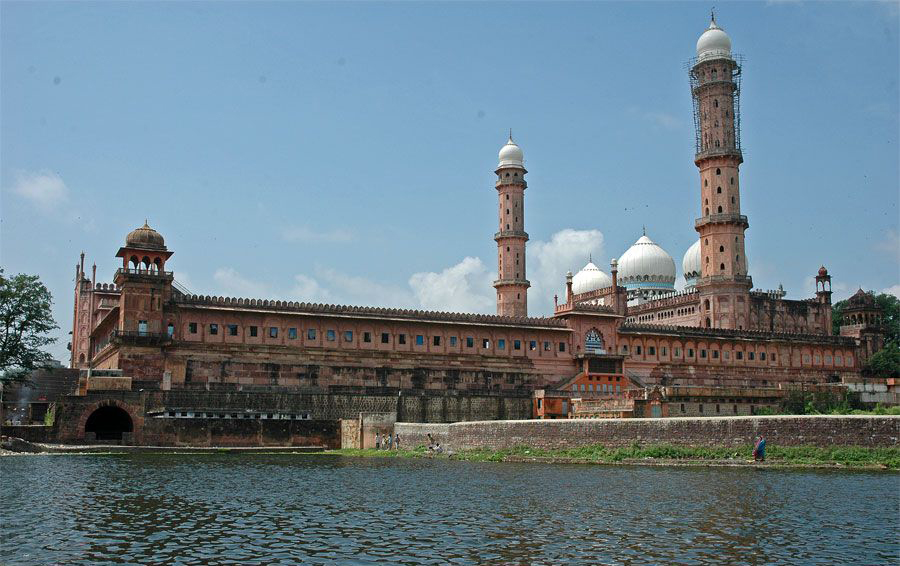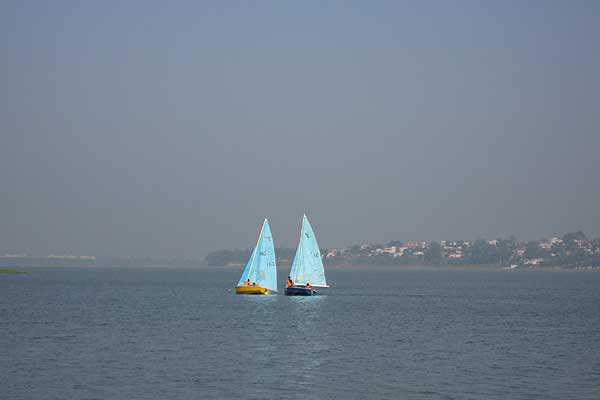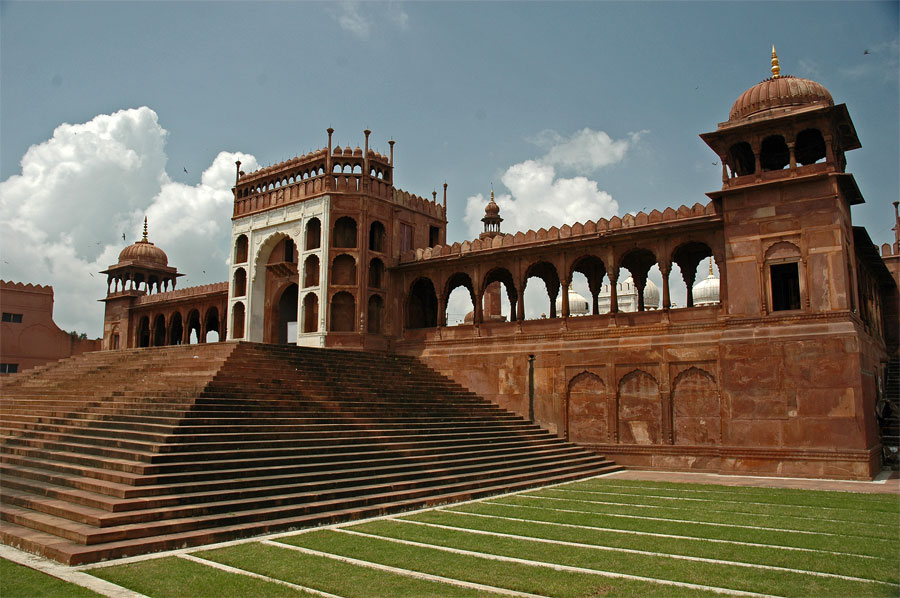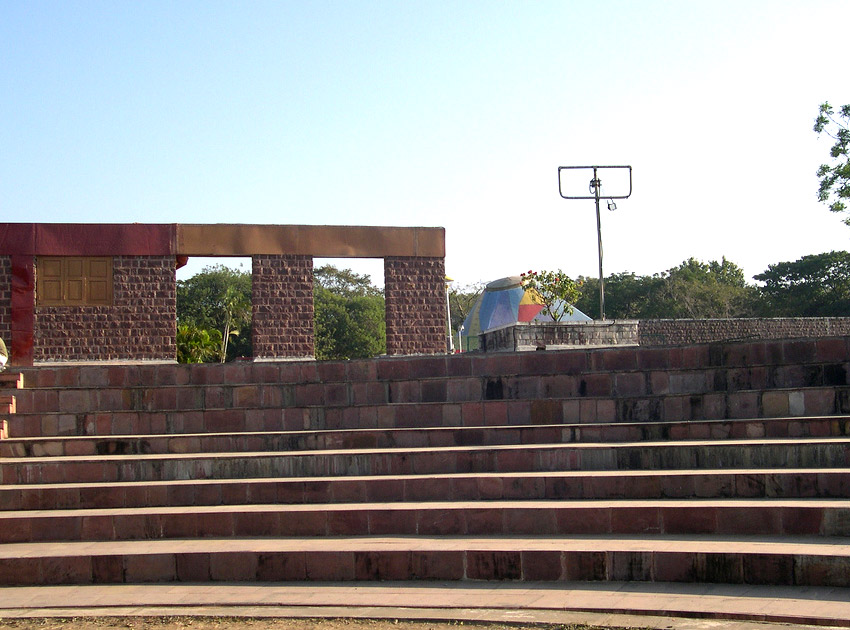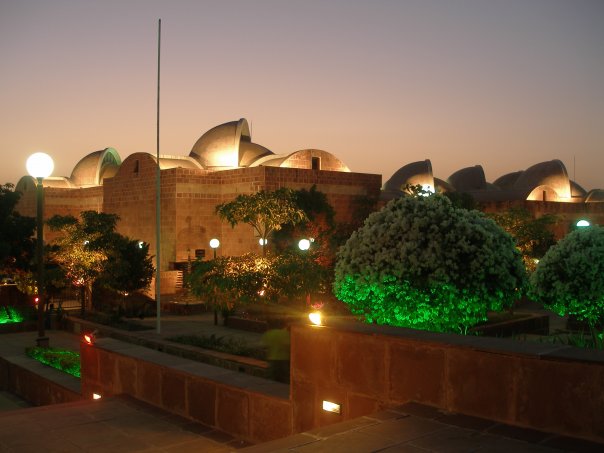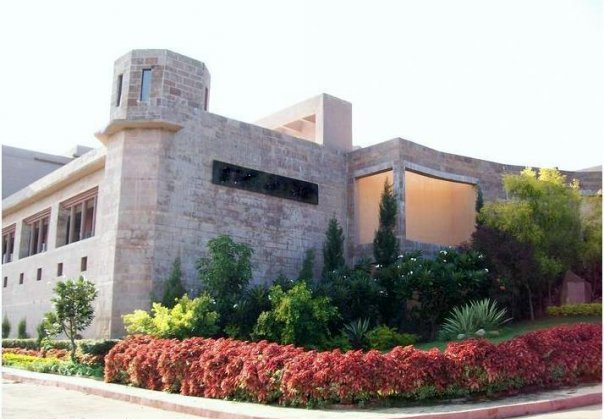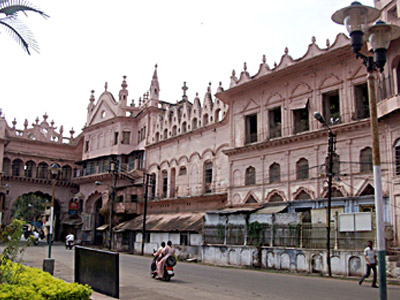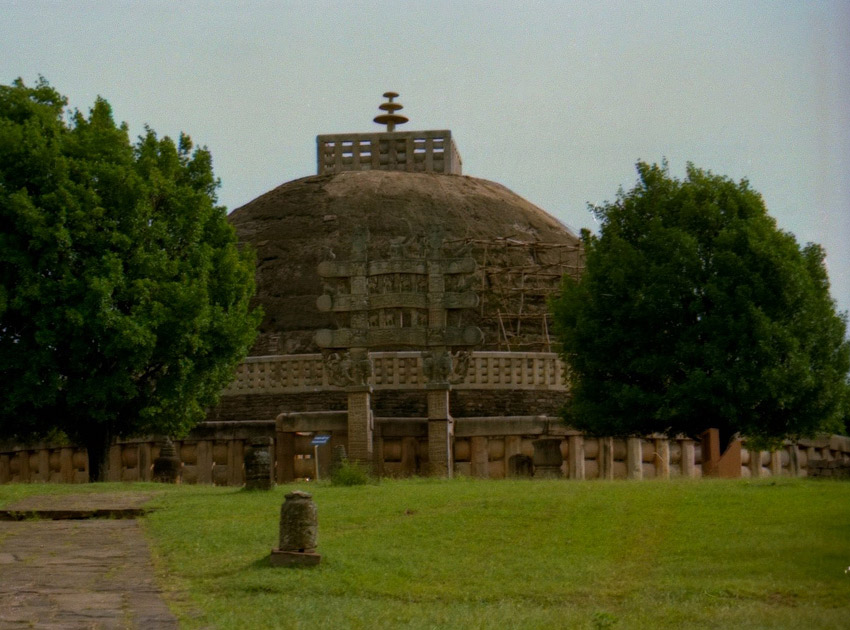Bhopal, The city of Madhya Pradesh
General Information
District:BhopalState:Madhya PradeshCountry:IndiaArea:2772 Sq. Km.Language Spoken:Hindi, Urdu and EnglishLong Distance Code:+91-755Importance:Capital city of Madhya PradeshBest Time To Visit:October to FebruaryDescription:
The city founded by Raja Bhojpal was named after him which eventually came to be known as Bhopal. A unique blend of old with new, Bhopal is often termed as the city of lakes due to the two beautiful lakes situated right in the centre of the city. The large lake on the banks of which Bhopal is situated provides this earlier small sleepy town a most picturesque environment in the plains.
Bhopal was founded by king Bhojpal in the 11th century but the new city was developed by Dost Mohammed in the 18th century. The legacy of this man came into prominence only when his son's wife started ruling on behalf of her son from behind the curtains. This began the rule of Begums in Bhopal. The last of them, begum Sultan Jehan proved to be the most strong, and the one who helped promoting education amongst the females of Bhopal. Till date the city bears the impression left by various dynasties with fine mosques and palaces while the new city boasts of broad avenues, laid out parks and gardens and a coming up urban town. It is one of the greenest urban towns of India. The forts, the palaces and the mosques provide a wonderful glimpse of the glorious past that was. Many dynasties and their kings ruled this place only to enhance and enrich the character of the city. The people of this city were famous for their leisurely life style of playing chess or going on a hunting expedition.
Bhopal suddenly came in picture when world's disastrous industrial tragedy struck the city on the cold December night of 1984. Nearly 20 years ago toxic gas, the deadly Methyl Isocyanate leaked from the US based Union Carbide factory and killed over 10,000 people and injured more than 50,000. This tragedy, the worst to happen ever in the industrial history of the world shook the people all over the world. Today Bhopal and many people live with the aftermath of that tragedy.Location:
Bhopal is the capital city of Madhya Pradesh. Surrounded by the districts of Sehore, Raisen, Vidisha, Guna and Rajgarh, Bhopal is situated amidst two lakes in a picturesque setting.
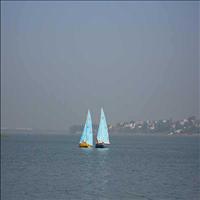 The two lakes of the city, due to which it is known as the city of lakes, are indeed the nucleus of the city. The city is virtually located on the bank of these lakes. The Upper Lake, was built nearly 1000 years ago by the famous king of the Paramar dynasty Raja Bhoj. The legend goes that the king was adviced by his doctors to build a huge tank with 365 tributaries which would cure his skin disease. The result is the huge 6 square kilometer lake of today. It is joined by a small bridge to the Lower Lake. The lower lake was built by Chote Khan in the 18th century which merged nearly 12 wells in the area used for irrigation and other purposes. It is nearly 8 square meter in area. Both these lakes provide a calm serenity to the town and also provide cool air. Apart from enhancing the beauty of the city, the lakes today offer boating with the use of motorboats, paddle boats and para sailors.
The two lakes of the city, due to which it is known as the city of lakes, are indeed the nucleus of the city. The city is virtually located on the bank of these lakes. The Upper Lake, was built nearly 1000 years ago by the famous king of the Paramar dynasty Raja Bhoj. The legend goes that the king was adviced by his doctors to build a huge tank with 365 tributaries which would cure his skin disease. The result is the huge 6 square kilometer lake of today. It is joined by a small bridge to the Lower Lake. The lower lake was built by Chote Khan in the 18th century which merged nearly 12 wells in the area used for irrigation and other purposes. It is nearly 8 square meter in area. Both these lakes provide a calm serenity to the town and also provide cool air. Apart from enhancing the beauty of the city, the lakes today offer boating with the use of motorboats, paddle boats and para sailors.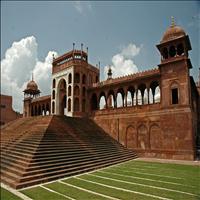 Bhopal was ruled by many, but it was the rule of the Begums of Bhopal, which left its impact. Bhopal has the largest number of Mosques in the whole of Asia. The Taj-ul-Masjid is considered to be the biggest mosque in the Indian subcontinent. Built by Shah Jehan Begum, it is a huge pink mosque with two massive white-domed minarets and three white domes over the main building. The beautiful mosque has a huge main hall with arched roof and marble floors. It is famous for the three day Ijtima annual congregation that is held here. People from all over India come here for it. While the Taj-ul mosque is the biggest, right opposite is the smallest mosques of the sub-continent Masjid Dhai Seedhi. The Moti Masjid or the Pearl Mosque of Bhopal is also a beautiful mosque built by Sikander Jehan in the late 19th century. This mosque is a near replica of the Jama Masjid of Delhi, though not in size. The Jama Masjid of Bhopal was built by Qudsia Begum in the early 19th century. This is a beautiful mosque with gold spikes crowning the minarets.
Bhopal was ruled by many, but it was the rule of the Begums of Bhopal, which left its impact. Bhopal has the largest number of Mosques in the whole of Asia. The Taj-ul-Masjid is considered to be the biggest mosque in the Indian subcontinent. Built by Shah Jehan Begum, it is a huge pink mosque with two massive white-domed minarets and three white domes over the main building. The beautiful mosque has a huge main hall with arched roof and marble floors. It is famous for the three day Ijtima annual congregation that is held here. People from all over India come here for it. While the Taj-ul mosque is the biggest, right opposite is the smallest mosques of the sub-continent Masjid Dhai Seedhi. The Moti Masjid or the Pearl Mosque of Bhopal is also a beautiful mosque built by Sikander Jehan in the late 19th century. This mosque is a near replica of the Jama Masjid of Delhi, though not in size. The Jama Masjid of Bhopal was built by Qudsia Begum in the early 19th century. This is a beautiful mosque with gold spikes crowning the minarets.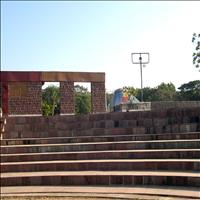 A fine example of amalgamation; of the new with the old, is evident with the structure of Bharat Bhavan, an institute for promotion of folk arts and other forms of arts. The building designed by Charles Correa is strikingly different from the rest of the city but still merging with exquisite harmony of the city. It also houses a museum specially dedicated for art and architecture which is worth a visit. Built in 1982, Bharat Bhavan is a complex, set in number of low buildings set around the bank of the lake.
A fine example of amalgamation; of the new with the old, is evident with the structure of Bharat Bhavan, an institute for promotion of folk arts and other forms of arts. The building designed by Charles Correa is strikingly different from the rest of the city but still merging with exquisite harmony of the city. It also houses a museum specially dedicated for art and architecture which is worth a visit. Built in 1982, Bharat Bhavan is a complex, set in number of low buildings set around the bank of the lake.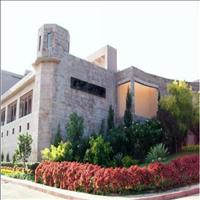 The most important and unique museum of Bhopal is the Indira Gandhi Rashtriya Manav Sangrahalaya or National Museum of Mankind. Located on the Shamla hills on the upper lake front, it is situated on a pre - historic site. Most probably only museum in the world which is strewn with pre historic painted rock shelters. The museum displays a variety of objects which show the lifestyle and the objects used by folk and tribal people. It is a treasure cove of knowledge which gives an insight on the life style of the people unknown. The library, audio-visual archive, computerized documentation and the collection of ethnographic specimens in the museum are among the best in the world. The Central Museum of Bhopal, established in 1949 has on display paintings, coins, porcelain objects, metal and ivory toys, woodcarvings and also specimens of local handicrafts. The State Museum is a museum dedicated to archaeology. Here one can find on display exquisite items those which were excavated from some archaeological sites of Madhya Pradesh.
The most important and unique museum of Bhopal is the Indira Gandhi Rashtriya Manav Sangrahalaya or National Museum of Mankind. Located on the Shamla hills on the upper lake front, it is situated on a pre - historic site. Most probably only museum in the world which is strewn with pre historic painted rock shelters. The museum displays a variety of objects which show the lifestyle and the objects used by folk and tribal people. It is a treasure cove of knowledge which gives an insight on the life style of the people unknown. The library, audio-visual archive, computerized documentation and the collection of ethnographic specimens in the museum are among the best in the world. The Central Museum of Bhopal, established in 1949 has on display paintings, coins, porcelain objects, metal and ivory toys, woodcarvings and also specimens of local handicrafts. The State Museum is a museum dedicated to archaeology. Here one can find on display exquisite items those which were excavated from some archaeological sites of Madhya Pradesh.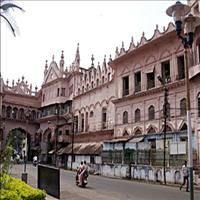 These two buildings reside side by side and are situated in the heart of the walled city of Bhopal. The Shaukat Mahal is a strange mixture of Indo-Islamic and European architecture, the nearby Sadar Manzil is relatively simple as it was used as a hall for public audience. The Shaukat Mahal stands apart from the architecture of the city which is predominantly based on Islamic architecture. Thus the Shaukat Mahal is not only a site of beauty but also for architectural curiosity.
These two buildings reside side by side and are situated in the heart of the walled city of Bhopal. The Shaukat Mahal is a strange mixture of Indo-Islamic and European architecture, the nearby Sadar Manzil is relatively simple as it was used as a hall for public audience. The Shaukat Mahal stands apart from the architecture of the city which is predominantly based on Islamic architecture. Thus the Shaukat Mahal is not only a site of beauty but also for architectural curiosity.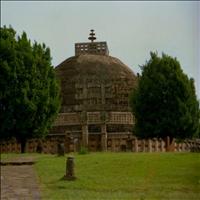 There are many places those can be visited nearby Bhopal. The most important amongst them are Sanchi, Bhimbetka, and Bhojpur.
There are many places those can be visited nearby Bhopal. The most important amongst them are Sanchi, Bhimbetka, and Bhojpur.Sanchi:
Located on the foot of a hill-- Sanchi is just 46 kms Bhopal. Famous for its Stupas, Sanchi has some of the oldest Stupas in India and is placed high on the Buddhist pilgrimage list. The place not only signifies and asserts the importance of Buddhism and the spread of the religion but is also a proof of the faith with which the Emperor Ashok built Stupas to encourage and spread the religion. Thus the place is religiously as well as historically important. One of the many Lion pillars that Emperor Ashok built all around the country is seen here.
Though Hinduism was prominent in this part of the country, Buddhism made a base here. The Stupas and Pillars were constructed, but all went in to oblivion with the religious decline.
The structures in Sanchi are organized and have the best engineering skills involved in the building. Another striking thing about the Stupas here Lord Buddha is represented in forms of the wheel and foot prints instead of the idols and images. The carvings on the Stupas are beautiful and intricate.
Built in the 2nd century B.C. the Stupas are believed to have caskets with sacred ashes of the disciples of the Lord. The difference between the other Stupas and the one in Sanchi are its beautiful arched gateways with scenes from the life of Buddha and also that of Emperor Ashok carved on them.
The Arches or the four marvelously carved gateways were constructed much later by the Andhra Kings. These exquisitely carved Torans, as they are popularly known, are the highlights of the structure of this Stupa. The carvings on these Torans depict the life scenes of Emperor Ashoka and also that of Lord Buddha.
The Museum maintained by the archaeological survey of India, houses many items which were discovered during the excavation of Sanchi area. Most prized possession of the museum is the lion crown from Ashoka pillar. The museum also has collection of utensils and other items used by the monks who lived here.
Bhojpur:
Hardly 28 kms from the main city of Bhopal stands the actual city, founded the by the Paramar King and named after him, Bhojpur. Bhojpur today is famous for its ancient unfinished Shiva temple, which is known as the Somnath of the East. This temple and its architecture date back to the 13th century and still remains mysteriously unfinished. The most attractive feature of the temple other than its architecture is its massive Lingam that stands about 2.3 meter tall. The cyclopean dam built nearby is also a major attraction for the tourists who visit Bhojpur.
Bhimbetka:
46 kms down south of Bhopal are the rocky terrains surrounded by the northern fringe of the Vindhya mountain ranges is Bhimbetka, famous for the cave paintings of the pre historic era. The cliffs which have over 600 rocky shelters belong to the Neolithic age It is an archaeological treasure cove with over 500 caves those have very precise paintings depicting the day to day life of the people then. The paintings are done mainly using red and white colour with occasional use of green and yellow. The scenes painted depict everyday life of our ancestors who lived eons ago. The scenes of hunting, dancing, riding, household scenes along with animal figures such as Lions, Tigers, Bison, Elephants, Crocodiles are shown in the paintings. Some paintings also depict popular religious rituals as well.
Udayagiri caves:
Hardly three kms further to Sanchi stand the Udayagiri caves. These rock cut caves find an inscription dating back to 4th and 5th century A.D. during the time of Chandragupta Maurya. He rock cut images carry the distinctive features of the Gupta dynasty. Most of these caves are dedicated to Hindu Gods other than two which are dedicated to Jain religion. The caves have massive structures of Lord Vishnu in his Boar inc
